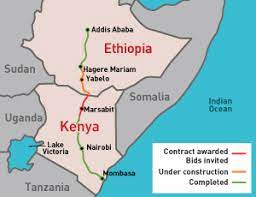Traveling from Kenya to Ethiopia by road and back can be an adventurous journey. Here’s a general overview of what you might expect:
1. **Route Options**: There are several routes you can take, depending on your starting point in Kenya and your destination in Ethiopia. The most common route is through Moyale on the Kenyan side and then crossing into Ethiopia. Another route could be via Nairobi to Isiolo and then onward to Marsabit before crossing into Ethiopia.
2. **Visa and Documentation**: Ensure you have the necessary visas for both Kenya and Ethiopia. Check the latest visa requirements and border crossing regulations before you depart. Make sure your passport is valid for at least six months beyond your intended return date.
3. **Vehicle Documentation**: If you’re traveling by car, ensure all vehicle documentation, including insurance, registration, and any required permits, are up to date.
4. **Road Conditions**: Be prepared for varying road conditions. While some parts of the route may have well-maintained highways, others may have rough terrain, especially as you get closer to the border regions.
5. **Border Crossing**: Expect to go through immigration and customs procedures at the border. Be patient as this can sometimes take time, depending on the day and time of your crossing. Make sure you have all necessary documents ready for inspection.
6. **Safety Precautions**: While traveling, especially in remote areas, it’s essential to take safety precautions seriously. Stay updated on the security situation along your route and consider traveling during daylight hours. Be cautious of potential hazards such as wildlife, road conditions, and other drivers.
7. **Accommodation and Supplies**: Plan your journey in advance, especially regarding accommodation and food stops. In more remote areas, options may be limited, so it’s advisable to carry sufficient supplies of water, food, and fuel.
8. **Health Precautions**: Take necessary health precautions such as vaccinations and carrying a basic medical kit. Malaria prophylaxis might be necessary depending on the areas you’ll be traveling through.
9. **Communication**: Ensure you have reliable communication devices such as a mobile phone with a local SIM card and emergency contact numbers.
10. **Local Customs and Laws**: Familiarize yourself with local customs and laws in both Kenya and Ethiopia to avoid any misunderstandings or legal issues.
11. **Return Journey**: Plan your return journey with similar considerations in mind, including border crossing procedures and road conditions.
Always stay informed and flexible as conditions can change, and it’s wise to have contingency plans in place.


